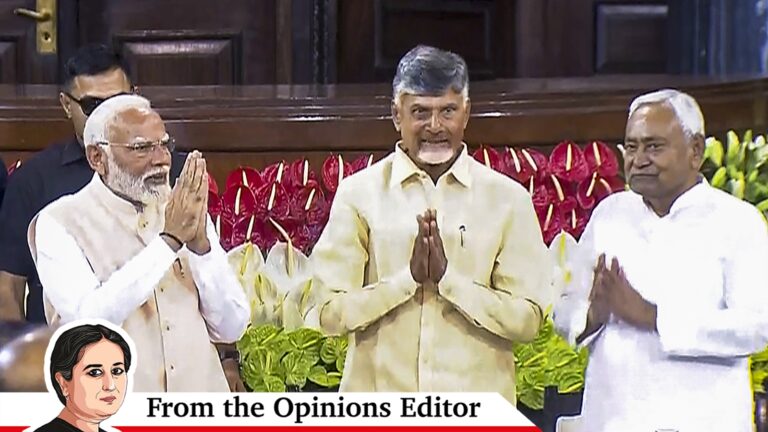Twelve days after the election results, what do we know so far? The performance of the Narendra Modi-led BJP, which has invested considerable time, effort and vast resources into spreading the overwhelming impression that its victory was inevitable, has fallen far short of its original goal. Even touching the halfway mark, Support for NDA allies.
We know that the Congress-led Opposition, and particularly Rahul Gandhi’s Congress, put up a strong fight on what seemed a very uneven playing field and, despite the difficulties, reversed the trend of unstoppable decline that had lasted for almost a decade.
But beyond that, the meaning of the verdict is still taking shape, because it’s not just something that will be recorded on a scoreboard. How the BJP and Congress interpret the numbers and piece them together will be crucial. A lot will depend on that in the coming days, on both sides of the political divide.
The difficulties in reading this mandate are common to all mandates in complex political systems with many interwoven elements, but this one is made even more difficult by its peculiarities: it severely reprimanded the incumbent but did not remove him from office, and it did not vote for the opposition, giving them a clear advantage.

So did the public shy away from the Modi-BJP in large numbers because they were alienated by welfare schemes that provided immediate relief but did not address their long-term woes? Were the lack of enough jobs the main cause of discontent? Or did fears that a stronger BJP would change the constitution and tinker with reservations alienate large swaths of scheduled castes, especially in the politically important state of Uttar Pradesh?
Could it be that the BJP is under the control of the central agencies, that it has targeted its political opponents and arrested two chief ministers on the eve of the polls? Could it be that PM Modi’s arrogance, his colleagues’ over-reliance on Modi worship and the party leadership’s failure to listen in selecting candidates have contributed to its decline? Could the BJP have split between its original supporters and those who had moved on from other parties? Could the RSS have protested against the BJP’s arrogance by campaigning less vigorously this time? Could it be that the PM’s open attacks on minorities late in the long campaign have effectively solidified the “Muslim vote” to his and his party’s detriment?
Was the Indian Union, despite its initial hiccups, ultimately seen as united in its discontent with the BJP? Was its emphasis on the crisis of democracy, unemployment and incomplete social justice compelling? Did its demand for a caste census finally resonate? Or had Rahul Gandhi’s two difficult marches made him more appealing? Did the Indian Union field a better candidate and engage in more sophisticated social engineering?

Or has the curse of incumbency caught up with the BJP in a country where the power and mobilisation promises of universal suffrage were realised at a low level of development, and whereby political empowerment runs up against the limits of state capacity?
Of course, these questions are not exhaustive, and they are intertwined and should be considered in parallel with one another, not individually.
For now there are no answers, only vague speculations, none of which point in the same direction.
In his first meeting with the newly elected NDA lawmakers, Modi spoke a new vocabulary, one that sounded almost like a different language. He used the word “NDA” more frequently and did not refer to “Modi” or “BJP” in the third person as he had done before. He spoke less of the central government and more of “rajya” and states. He valued consensus over majorities.Buff Mat “(Majority)” is “Sarkar “(Government),” he said, “Salvamat (Consensus)” is “DeshIn another encouraging change from previous rhetoric, PM Modi said the opposition was against the government, not the country.If Rashtra does not give Vipakshu, give Vipakshu to me.“
but Modi’s New Cabinet 3.0The subsequently announced “Cabinet Reshuffle Plan” and the allocation of ministries within it emphasize continuity rather than acknowledging change: there have been no changes in key ministries, and no significant gains of seats important to allies.
Elsewhere, the Lt. Governor resurrected the gloomy but familiar old spectre of intolerance to free speech by authorising the prosecution of writer Arundhati Roy under the draconian UAPA. Lt. Governor Vinay Kumar Saxena was acting on an FIR filed in 2010 for making a “provocative speech” in New Delhi. And NCERT’s new political science textbook for class 12, in its rewrite of the Ayodhya conflict, refers to the Babri Masjid as a “three-domed structure” and not by name. The Babri Masjid has been demolished again, this time for mourning.
Until next time,
Vandita

